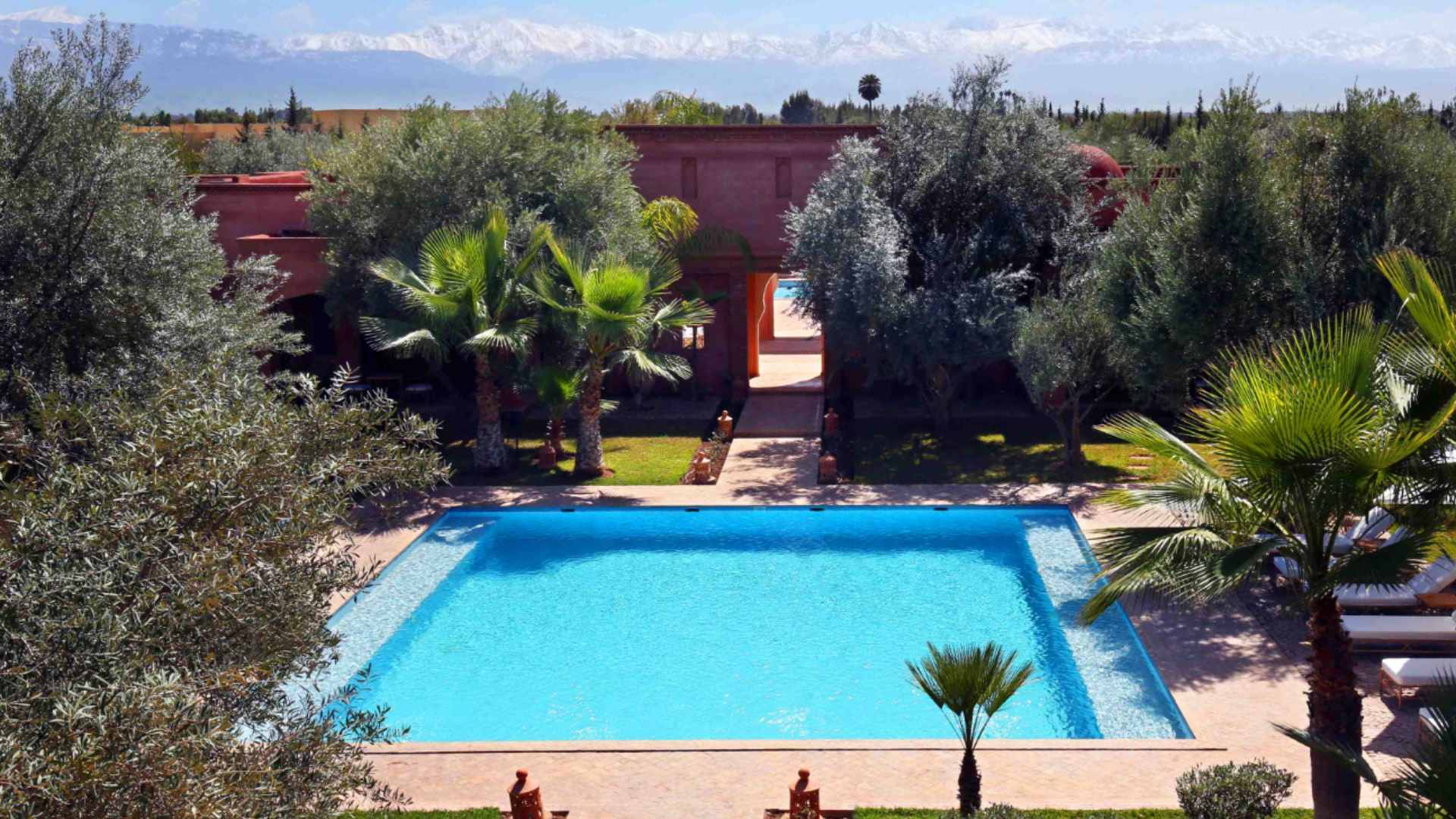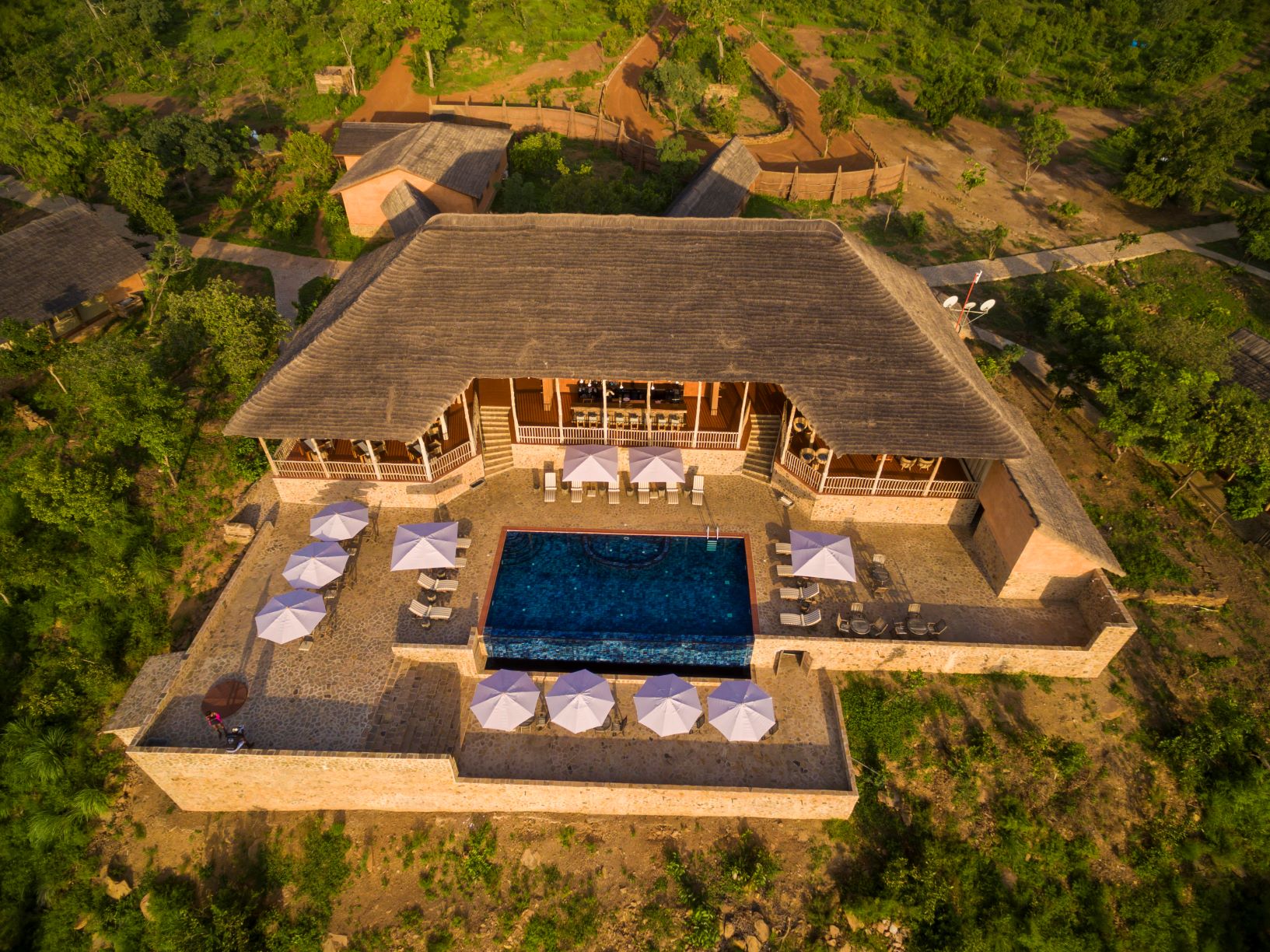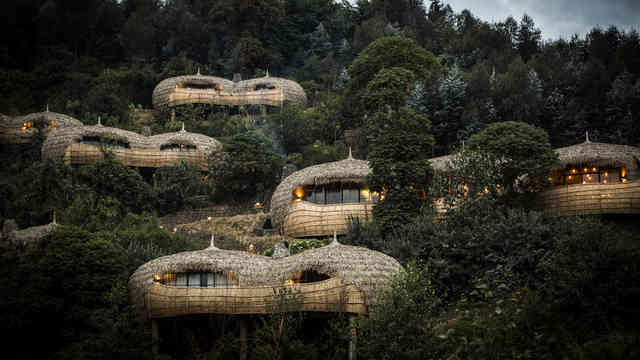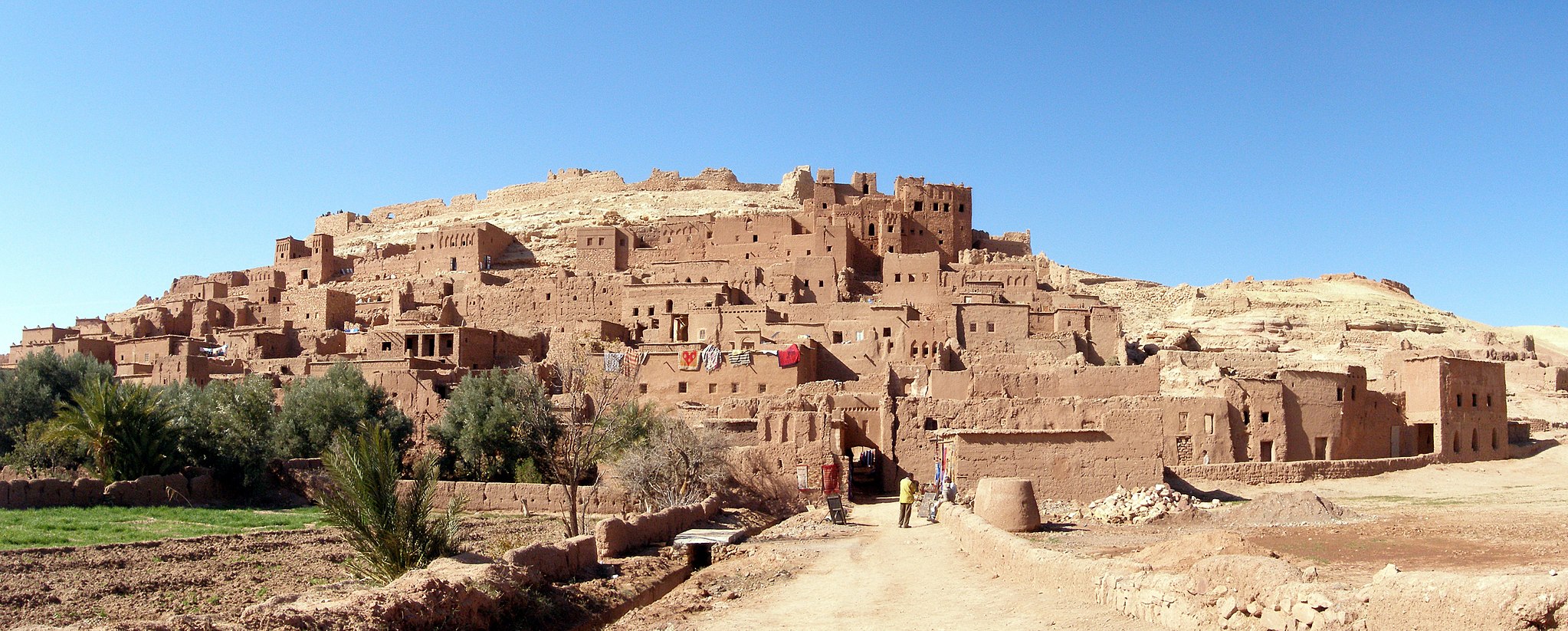Share This Article
Africa is definitely THE top travel destination this year. This is just the most recent evidence of an ongoing trend, compared to all the other regions of the world, this continent has registered the second highest tourism growth (+4.7%) in the last decade, behind Asia and the East Pacific region. According to the UNWTO, Africa’s travel and hospitality industry has quadrupled in the last 15 years. It is also a continent that is positioning itself to lead when it comes to the development of a sustainable tourism infrastructure, as the recent Sustainability Charter by the African Travel and Tourism Association proves.
On Wayaj, travelers who want to explore the variety of cultures and ecosystems of the world’s second largest continent can find many sustainable accommodations that allow them to live authentic experiences while respecting the delicate natural balance of their destination. We have selected a sample of several locations from across African (North, South, East, West and Central) to inspire your travel plans to this enchanting continent.
Ouarzazate (Morocco)
It might be because of the challenge of its extreme conditions, the ancients secrets it hides or its breathtaking night skies, but the The Sahara has always exerted a special attraction for travelers and explorers. The town of Ouarzazate (pronounced Wa-za-zat), nicknamed the Door of the Desert, is the ideal point to discover this fascinating region of the world.
The desert safaris departing from here take you to spectacular Dades gorges and Todra gorges, passing through oasis, timeworn kasbahs and forgotten villages along ancient caravan routes. A stop at the Bedouin camp for lunch or for the night will allow you to observe the ways of the Blue People, who have been able to adapt and survive to this extreme climate for centuries.
Back in town, a great starting point to explore the local culture is the Taourirt Kasbah. With over 300 rooms, it is an incredible maze of chambers and passages, and while many are empty with white walls, walking through you’ll eventually come across beautifully tiled rooms with intricate ceilings. At the nearby fortified village of Aït Benhaddou, a UNESCO World Heritage Site, visitors can admire the traditional earthen clay architecture and get a glimpse of what the life at a caravan town might have been.
Ouarzazate is also known as Morocco’s Hollywood, as nearly half of the films shot in Morocco are made in this town. Film fans definitely have to take a tour of the legendary Atlas Film Studios where films like “Lawrence of Arabia” and “Star Wars” were shot.
Scenes from Ridley Scott’s “Gladiator” and “The Mummy,” along with a host of others, have also been filmed in here. The city was more recently depicted as Pentos where, in the pilot episode of “Game of Thrones”, Daenerys and Viserys first met Khal Drogo and the Dothrakis.


Where to stay
When visiting the charms of Ouarzazate, stay at the Ecolodge L’Ile de Ouarzazate. The buildings were made by hand using traditional Berber techniques combined with modern twists and the rooms have private balconies from which you see a simply amazing night sky. It’s close to Taourirt Kasbah and the Atlas Film Studios are also nearby.
“Layyina” means soft in Arabic. Dar Layyina was conceived in an authentically Moroccan spirit combining modern sophistication and tradition. Situated in the heart of a beautiful flowered private park, the property features the villa (the Ryad), 2 swimming pools, spa, a panoramic terrace with spectacular views of the Atlas range, and the game area, thus offering multiple places to relax and share great moments.
Mole National Park (Ghana)
For its vibrant culture, wealth of wildlife parks and a suitable tourism infrastructure, Ghana has been a top destination in West Africa for some time.
The Mole (Mo-lay) National Park is the largest wildlife sanctuary and one of seven National Parks of this country. The flat savannah with gallery forests along the rivers and streams is home to over 90 species of mammals. Elephants, antelopes, kob, bushbucks, monkeys, warthogs, and baboons coexist offering visitors a unique perspective on the beauty, drama and harmony of life.

The region also hosts 300 different bird species. It is also the main spot for several raptors and other large birds that have become scarce in more settled areas, like the white-backed vulture, the martial eagle, marabou, and the saddle-billed stork.
Walking safaris take place in the early morning and late afternoon where visitors can really get close to the wildlife. The dry season (January to March) is definitely the best time to visit Mole as there’s a much higher concentration of animals around the main waterhole.
A number of caves located in the park are said to have served as hiding places for people who were running way from two notorious slave traders. These slavers, Samori and Babatu, used the location as their base during the slave trade.
There are 33 communities around Mole with a total population of about 40,000 people. One of these communities is Mognori. Wayajers can visit and get of feel for what the African Village life of farming and animal husbandry is like. You can also go out on the Mole River in native canoes and visit with local families.
The Larabanga Mosque, built in 1421, is also close by. Referred to as the “Mecca of West Africa”, it was built with mud and reeds and has two tall towers. Declared a World Heritage site in 2001, it’s also on the World Monuments Fund’s list of “100 Most Endangered Sites.”

It’s one of only eight mosques in the country built by hand and has long been a pilgrimage site for Ghana’s Muslim population.

Where to stay
Zaina Lodge is located right in Mole National Park and looks out over a seemingly endless savannah. All 25 rooms are luxury-tented chalets, complete with private balconies. There are indoor showers, as well as outdoor showers for those who like to bathe under the stars.
The lodge overlooks two waterholes where guests can see elephants, Kob, and baboons gather. Sometimes the wildlife gets even closer. Look out for elephants drinking from of the hotel fountain!
Chobe National Park (Botswana)

Located in Northern Botswana, Chobe National Park is renowned for its biodiversity, as its 11,700 km2 (4,500 sq mi) encompass lush floodplains, savannahs, woodlands, grasslands and marshes. The park has managed to preserve much of its wildlife. It boasts a large lion population, cheetas, wildbeest, and zebras. The white rhinos were reintroduced in 2001, and the elephants numbers are also going up as the fight against poaching is showing positive results.
The Chobe River is blessed with an abundance of fishand over 450 bird species making it a paradise for birding. Visitors can cross the shimmering waters of the Zibadianja Lagoon in a pontoon boat or stroll the floodplains with an expert guide and learn about the complex nature of hydrology in northern Botswana.
The Chobe region is the homeland of the Hambukushu, Bayei and Basubiya peoples. In the 1850s, locals met explorer David Livingstone on his way to the Victoria Falls (a little over an hour away from Chobe National Park), and unfortunately he was followed by big-game hunters seeking trophies and ivory and timber companies to exploit the precious mahogany woodlands. Luckily, the uniqueness of the flora and fauna of this land were recognized early on, and part of the region was declared non-hunting area in 1932. The current park was first protected as a game reserve in 1961 and proclaimed as national park in 1967.


Where to stay
Zarafa Camp, is located on the private 130,000 hectare Selinda Reserve. The Reserve links the Okavango Delta with Chobe National Park and every area of the camp offers stunning views of the Zibadianja Lagoon. Each of Zarafa Camp’s four guest tents is 1000 square foot (100m2) and set on a raised deck. A bedroom is connected to a full lounge and bathroom complete with cooper claw-foot bath. Outside each tent is a private plunge pool and outdoor shower. The camp has an open-air gym and offers in-room massages.
Serengeti National Park (Tanzania)

Serengeti National Park is known for its abundance of wildlife and high biodiversity. The vast plains of the Serengeti cover 1.5 million hectares of savannah. The annual migration to waterholes by herds of wildebeest, gazelles, and zebras, followed by their predators, is one of the most impressive natural events in the world.
The Serengeti is believed to have more than 3,000 lions in its ecosystem. This is the largest number of lions in Africa due in part to the large number of species which they prey on. Also visible are African leopards. These predators are commonly seen in the Seronera region of the park, but are present throughout with a population of around 1,000. Africa bush elephants have bounced back from population lows in the 1980s caused by poaching. There are over 5,000 with many in the northern region of the park. There’s currently a small population of 31 Eastern black rhinoceros also in the northern area. They’re low numbers are due to rampant poaching. African buffalos have been a bit luckier. They number about 53,000.

Where to stay
The Elewana Serengeti Migration Camp is located at the starting point of the Migration, next to the Grumeti River in Northern Serengeti. Its 20 luxurious tents are designed to minimize the impact on the environment and blend seamlessly with the surroundings. From the 360-degrees verandah deck that surrounds each accommodation, guests can completely immerse themselves in the sounds and sights of this unique experience.
Volcanoes National Park (Rwanda)
We conclude our guide to African travel in the heart of this fascinating continent. Rwanda has been named the Singapore of Africa for its fast development and thriving digital economy, but the main tourist attraction of this country remains the Volcanoes National Park and its gorilla population. However, on this side of the Virunga region a permit to trek up to see the gorillas will set you back $ 1,500 -with a 30% discount between November and May when it’s low season. The high fee has been set to help preserve the gorilla population from human-transmitted diseases and to support the welfare of the local communities who are entitled to receive 15% share of the total revenue earned from the sale of gorilla permits.

Certainly Rwanda is positioning itself as a luxury destination when it comes to wildlife experiences, and only time will tell if the wealth generated by these choices is going to benefit the population and the preservation efforts.
However, the Volcanoes National Park features other worthy attractions besides gorillas and a plethora of indigenous animal species. The Musanze caves, the Buhanga Eco-park which used to the place for coronation of Rwandan kings, the breathtaking view of the twin lakes Burera and Ruhondo, volcano climbing at Bisoke and Karisimbi and also a visit to one of the many local museums of genocide created not to forget one of the country’s (and humanity’s) darkest hours.

Where to stay
For a holistic experience of this region, the Bisate Ecolodge is definitely the place to be. Located in a natural amphitheater between the Bisoke and Karisimbi volcanoes, its distinctive sustainable villas offer all the comforts while keeping the impact to the surrounding habitat to a minimum. The property is also actively involved in local reforestation and education programs.
From the magic of the night sky in the desert, to exotic birds gliding over Chobe Park’s Zibadianja Lagoon, and elephants gathering at a watering hole at Mole National Park, there is no doubt that Africa has a lot to offer to visitors, and its increasingly reliable eco-tourism infrastructure guarantees that its unique habitats, wildlife and local communities all benefit from our wanderlust.


 Photo by China_Crisis
Photo by China_Crisis


